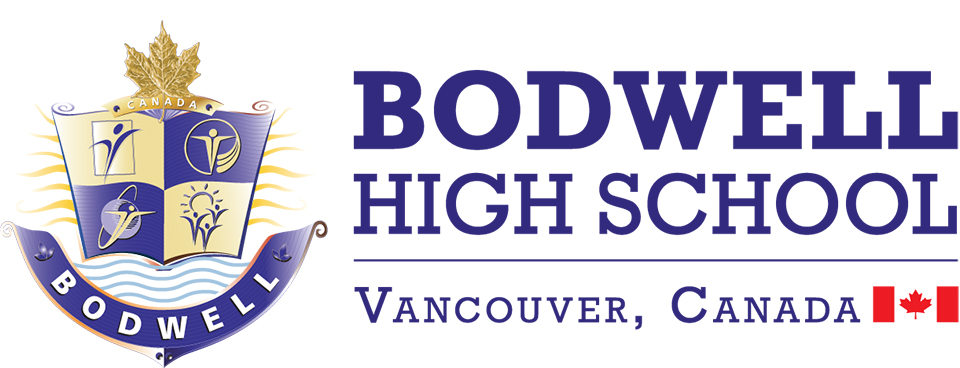B.C. private school provides a multicultural experience with extensive academic opportunities
B.C. private school provides a multicultural experience with extensive academic opportunities St. Albert Gazette


Exploring a World of Opportunities at Bodwell High School
When Ericka Rothenburger, a resident of Prince Rupert, reflects on her time at Bodwell High School, she describes it as an experience that allowed her to see the world, experience different cultures, and try new cuisines. Graduating in 2011, Rothenburger has since traveled across Canada for her education and career, currently working for her home city’s Port Authority.
Bodwell High School, located in North Vancouver, offers students the unique opportunity to broaden their multicultural horizons while receiving a strong secondary education. The school provides a culturally diverse environment that fosters active learning and helps students become well-rounded citizens.
Top-Tier Education and Global Perspectives
In addition to its cultural diversity, Bodwell High School offers top-tier education and extensive educational opportunities. The school provides International Baccalaureate (IB-MYP) courses for grades 8 to 10, B.C. curriculum for grades 10 to 12, and Advanced Placement (AP) courses for Grade 12.
Local Experiences with a Global Reach
Beyond classroom learning, students at Bodwell High School have the opportunity to participate in outdoor adventures and city sightseeing. These activities allow students to explore local attractions, build relationships, and expand their worldly knowledge. The school takes a comprehensive approach to education, providing personalized guidance from admission to post-secondary through a team of 10 dedicated counselors.
Graduates, Ambitious Peers, and Scholarship Opportunities
Bodwell High School has a track record of producing graduates who excel on a global stage. Many of its Canadian graduates have gone on to high-performing international careers, with some even starting their own businesses. The school’s emphasis on entrepreneurship and international perspectives has inspired students like Felix Lam, Class of 2007, who met his closest friends at Bodwell and later formed business partnerships with them.
Nearly 98% of Bodwell’s graduates gain admission to their university of choice. The school has established strong relationships with renowned institutions such as the University of Toronto and the University of Waterloo, creating better pathways for its students. Bodwell actively engages with local institutions like UBC and SFU, and recently welcomed Dr. Darren Dahl, the Dean of UBC Sauder School of Business, as a graduation guest speaker.
Scholarship Opportunities for Canadian Students
Bodwell High School is currently inviting highly motivated and academically strong Canadian students to apply for entrance scholarships for the 2024-25 school year. These scholarships, valued at up to $10,000 for day students and up to $20,000 for boarding students, aim to develop a new generation of Canadian students with international reach.
To submit an application for a scholarship or admission, or for more information, visit bodwell.edu.

Founded in 1991 in Vancouver, Bodwell High School is a non-denominational, co-educational day and boarding school that provides high-quality education for grades 8 to 12. The school’s new facility in North Vancouver overlooks the Vancouver harbor.
SDGs, Targets, and Indicators
SDGs Addressed:
- SDG 4: Quality Education
- SDG 10: Reduced Inequalities
- SDG 17: Partnerships for the Goals
Targets Identified:
- Target 4.7: By 2030, ensure that all learners acquire the knowledge and skills needed to promote sustainable development, including among others through education for sustainable development and sustainable lifestyles.
- Target 10.2: By 2030, empower and promote the social, economic and political inclusion of all, irrespective of age, sex, disability, race, ethnicity, origin, religion or economic or other status.
- Target 17.17: Encourage and promote effective public, public-private and civil society partnerships, building on the experience and resourcing strategies of partnerships.
Indicators:
- Indicator 4.7.1: Extent to which (i) global citizenship education and (ii) education for sustainable development are mainstreamed in (a) national education policies; (b) curricula; (c) teacher education; and (d) student assessment.
- Indicator 10.2.1: Proportion of people living below 50 percent of median income.
- Indicator 17.17.1: Amount of United States dollars committed to public-private partnerships.
Analysis
1. Which SDGs are addressed or connected to the issues highlighted in the article?
The article addresses or connects to the following SDGs:
- SDG 4: Quality Education – The article discusses the high-quality education provided by Bodwell High School and its commitment to helping students reach their full potential.
- SDG 10: Reduced Inequalities – The article highlights how Bodwell High School promotes social inclusion by providing a culturally diverse environment and opportunities for students to bond and build relationships.
- SDG 17: Partnerships for the Goals – The article mentions Bodwell High School’s partnerships with renowned institutions and its engagement with local institutions to create opportunities and pathways for students.
2. What specific targets under those SDGs can be identified based on the article’s content?
Based on the article’s content, the following specific targets can be identified:
- Target 4.7: By 2030, ensure that all learners acquire the knowledge and skills needed to promote sustainable development, including among others through education for sustainable development and sustainable lifestyles.
- Target 10.2: By 2030, empower and promote the social, economic and political inclusion of all, irrespective of age, sex, disability, race, ethnicity, origin, religion or economic or other status.
- Target 17.17: Encourage and promote effective public, public-private and civil society partnerships, building on the experience and resourcing strategies of partnerships.
3. Are there any indicators mentioned or implied in the article that can be used to measure progress towards the identified targets?
The article mentions or implies the following indicators that can be used to measure progress towards the identified targets:
- Indicator 4.7.1: Extent to which (i) global citizenship education and (ii) education for sustainable development are mainstreamed in (a) national education policies; (b) curricula; (c) teacher education; and (d) student assessment. This indicator can measure the extent to which Bodwell High School incorporates global citizenship education and education for sustainable development in its policies, curricula, teacher education, and student assessment.
- Indicator 10.2.1: Proportion of people living below 50 percent of median income. This indicator can measure the economic inclusion promoted by Bodwell High School by assessing the proportion of students or families living below a certain income threshold.
- Indicator 17.17.1: Amount of United States dollars committed to public-private partnerships. This indicator can measure the commitment and investment in public-private partnerships by assessing the amount of financial resources dedicated to such partnerships by Bodwell High School and its partner institutions.
Table: SDGs, Targets, and Indicators
| SDGs | Targets | Indicators |
|---|---|---|
| SDG 4: Quality Education | Target 4.7: By 2030, ensure that all learners acquire the knowledge and skills needed to promote sustainable development, including among others through education for sustainable development and sustainable lifestyles. | Indicator 4.7.1: Extent to which (i) global citizenship education and (ii) education for sustainable development are mainstreamed in (a) national education policies; (b) curricula; (c) teacher education; and (d) student assessment. |
| SDG 10: Reduced Inequalities | Target 10.2: By 2030, empower and promote the social, economic and political inclusion of all, irrespective of age, sex, disability, race, ethnicity, origin, religion or economic or other status. | Indicator 10.2.1: Proportion of people living below 50 percent of median income. |
| SDG 17: Partnerships for the Goals | Target 17.17: Encourage and promote effective public, public-private and civil society partnerships, building on the experience and resourcing strategies of partnerships. | Indicator 17.17.1: Amount of United States dollars committed to public-private partnerships. |
Copyright: Dive into this article, curated with care by SDG Investors Inc. Our advanced AI technology searches through vast amounts of data to spotlight how we are all moving forward with the Sustainable Development Goals. While we own the rights to this content, we invite you to share it to help spread knowledge and spark action on the SDGs.
Fuente: stalbertgazette.com

Join us, as fellow seekers of change, on a transformative journey at https://sdgtalks.ai/welcome, where you can become a member and actively contribute to shaping a brighter future.







